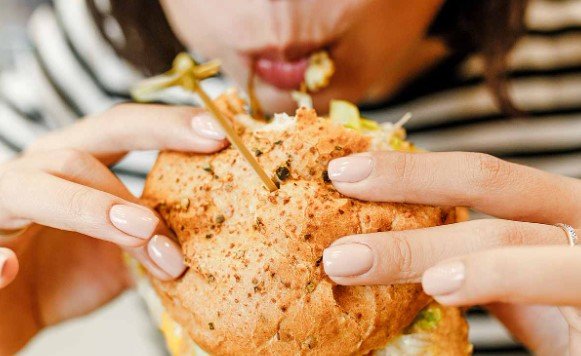In an age where every hour is crammed and each moment seems borrowed, even the ritual of eating has been compressed into hurried intervals. The modern tempo leaves little room for savoring nourishment.
“Our restless existence has bred a tendency to bolt down meals while juggling a dozen diversions,” explains Bethany Thayer, MS, RDN, director of the Henry Ford Center for Health Promotion and Disease Prevention. “In doing so, we’ve muted the pleasure of tasting and the mindfulness of dining.”
To rush a meal is not merely to strip away its delight. It invites burdens such as digestive strain and the creeping specter of excess weight.
How Do You Recognize the Habit of Eating Too Swiftly?
There isn’t an iron-clad measure dictating meal duration, yet Thayer suggests it should comfortably extend beyond twenty minutes. Red flags of rapid eating often reveal themselves through:
- Coughing or choking, brought on by swallowing food without adequate mastication
- A swollen, bloated belly from swallowing both sustenance and gulps of air
- A gnawing hunger creeping back soon after finishing a meal
- Fork poised for another bite before the previous one has even been fully chewed or swallowed
“You need not linger endlessly at the table,” Thayer remarks, “but carving out at least half an hour per meal allows your body the rhythm it deserves.”
The Hidden Perils of Eating in Haste
Speeding through meals is a thief of both enjoyment and health. Dining should be an interlude for pause and replenishment, not a race against the clock.
“Digestion ignites in the mouth,” Thayer notes. Each chew summons saliva, laced with enzymes that prime food for its journey through the body. The mechanical act of chewing also signals the stomach, boosting blood flow and preparing it for the work ahead. “It all commences with that inaugural bite,” she stresses.
Neglect this stage, and digestion begins on uneven footing. Proper mastication grants your body the advantage—arming enzymes to disassemble nutrients with greater efficiency.
The Link Between Rapid Eating and Expanding Waistlines
Another hazard lurks in the hurried bite: weight gain. Research consistently ties fast eating with greater chances of overweight and conditions such as diabetes.
Why? Because haste undermines the body’s intricate feedback loop. Satiety is not instant—it takes about twenty minutes for the stomach to send fullness cues to the brain. When you eat faster than those signals can arrive, it’s effortless to overindulge.
“As those signals lag, we often find ourselves continuing to eat well past satiety,” says Thayer. The consequence is predictable—habitual overeating gradually translates into unwanted weight.
Cultivating the Art of Slowing Down
Reclaiming your pace at the table holds both physical and emotional rewards. And forming slower eating habits may be less daunting than assumed.
Thayer offers several practices:
- Chew deliberately. You need not tally every bite, but check occasionally—certain foods may warrant up to thirty chews.
- Abandon distractions. Dining while gazing at screens, scrolling through phones, or steering a car fosters unconscious, accelerated eating. Replace it with focused enjoyment, preferably in the company of others.
- Avoid ravenous arrivals. Letting hunger spiral unchecked often drives us to devour food hastily.
- Practice mindful eating. Engage every sense—the sight, fragrance, texture, and flavor of each morsel. Presence at the table transforms dining into an experience, not a transaction.
- Use physical pauses. Rest your utensil between bites. Switch to your non-dominant hand or experiment with chopsticks. Such subtle tricks naturally moderate pace.
By decelerating, meals unfold as moments of pleasure rather than obligations. You may discover that food tastes richer, digestion feels smoother, and your body responds with gratitude.
